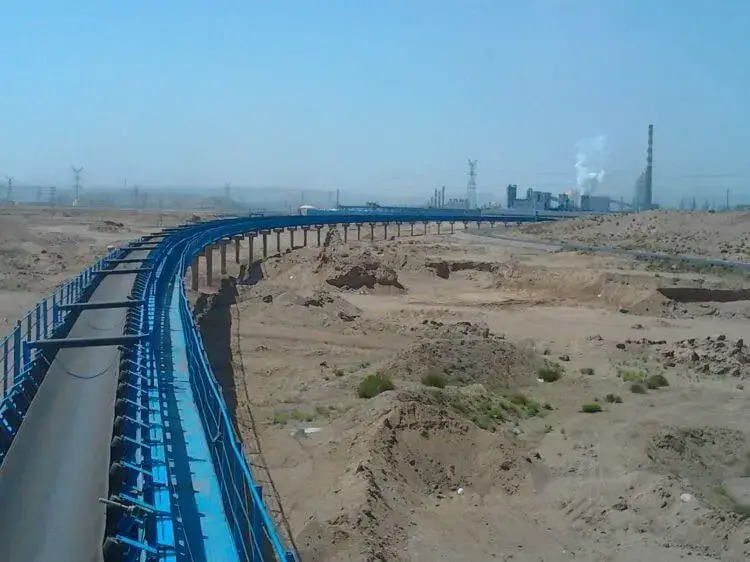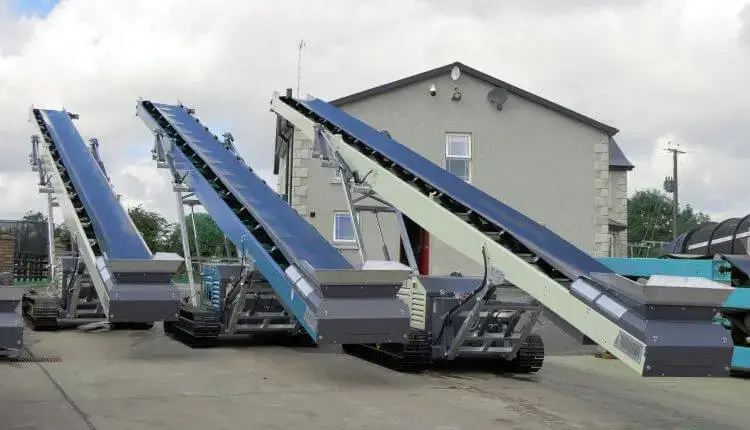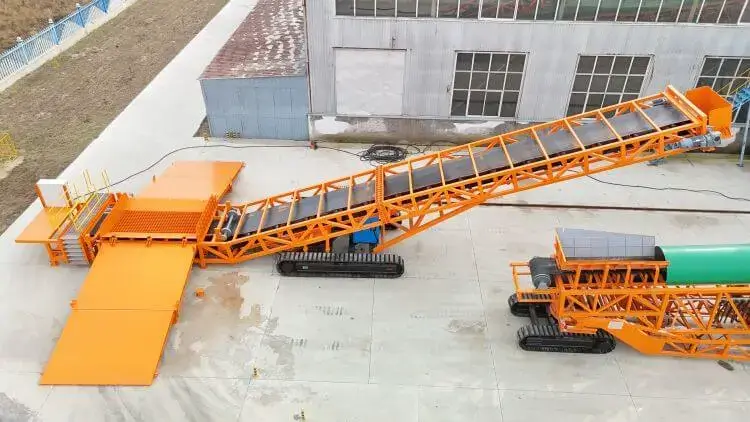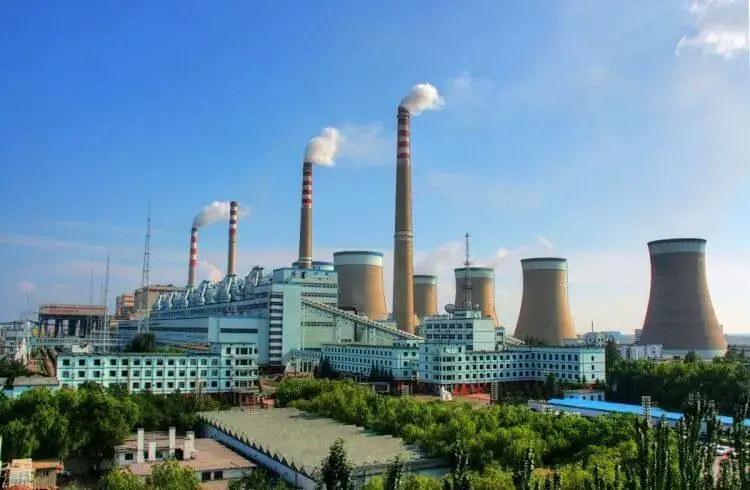Energy and Power Industry
In the energy and power industry (coal-fired power plants, biomass power plants, waste incineration power plants, new energy supporting energy storage sites), the conveyance of bulk materials (coal, biomass fuel, solid waste, fly ash, desulfurized gypsum) faces four core challenges: "stringent environmental requirements, complex material characteristics, strong conveyance continuity, and equipment corrosion & wear resistance". Relying on core equipment such as long-distance belt conveyors, pipe belt conveyors, hopper feeders, and truck unloaders, as well as independently developed components like high-wear-resistant idlers, anti-corrosion rollers, and non-powered dust-collecting chutes, Zoomry Heavy Industry creates customized conveying solutions for the energy and power industry featuring "sealed environmental protection + anti-clogging adaptation + continuous stability".
Solution Advantages
Centering on the characteristics of the energy and power industry — "high environmental standards, strong continuity, and diverse materials" — Zoomry's solutions have distinct advantages in three dimensions: "environmental compliance, material adaptability, and operational stability". All equipment and components have passed the strict certifications and inspections mentioned in the brochure, ensuring adaptation to the harsh operating scenarios of power plants:
- Environmental Compliance: All equipment and components comply with the ISO 9001 Quality Management System, ISO 14001 Environmental Management System, as well as CE (Europe) and EAC (Russia) certifications, controlling dust and pollution from the source. For example, independently produced idlers have a noise level of ≤ 40-45 dB (surpassing China's GB standard of 55 dB), which can reduce the impact of equipment operation noise on the environment around power plants; pipe belt conveyors fold the conveyor belt into a tubular structure (supported by 6 sets of idlers forming a hexagon) to realize 100% sealed conveyance of materials, preventing dust diffusion from materials such as coal and fly ash; non-powered dust-collecting chutes are installed at the discharge end, controlling the dust concentration in the operation area below 5mg/m³ and complying with mainstream global power plant environmental standards;
- Adaptability to Diverse Material Scenarios: Equipment functions are customized based on the material characteristics of different energy types — long-distance belt conveyors for coal-fired power plants (conveying capacity 500-2000 tph) are adapted for long-distance coal transfer, with the machine body treated with anti-corrosion coating to resist corrosion from power plant flue gas; hopper feeders for biomass power plants are equipped with vibration anti-clogging devices, and the inner wall of the hopper is lined with polytetrafluoroethylene (PTFE) liners to avoid adhesion and clogging of straw/wood chips; truck unloaders for waste incineration power plants use wear-resistant conveyor belts and anti-corrosion rollers to withstand the corrosiveness and impact of solid waste;
- Stable and Efficient Operation: Zoomry has built its own quality inspection center (including chemical laboratories, idler laboratories, etc., equipped with over 60 testing devices). Core components (idlers, rollers, cleaning scrapers) are independently produced with sufficient inventory, enabling fast supply within 48 hours and reducing equipment downtime. Continuity is improved through "collaborative equipment design" — for instance, the combination of "truck unloader + hopper feeder + pipe belt conveyor" can shorten the coal "unloading-feeding-conveyance" cycle from 30 minutes (with traditional equipment) to 12 minutes, ensuring continuous fuel supply for power plants.
Application Solutions for Segmented Scenarios in the Energy and Power Industry
Focusing on three core scenarios of the energy and power industry — "coal conveyance, biomass fuel conveyance, and power plant by-product transfer" — Zoomry Heavy Industry develops targeted conveying systems by integrating material characteristics and power generation rhythms of each scenario, ensuring seamless connection between bulk material conveyance and power plant operation:
Long-Distance Sealed Conveyance Solution for Coal
Coal-fired power plants need to transfer coal (moisture content 10%-20%, particle size 5-50mm) from the coal storage yard to the boiler coal bunker, with a conveyance distance of up to several kilometers. It is necessary to avoid coal dust pollution and ensure 24/7 continuous coal supply (interrupted coal supply may cause shutdown). Zoomry's solution centers on "long-distance belt conveyor + pipe belt conveyor" to build a sealed and continuous conveying system:
- Main Equipment Configuration: Select long-distance belt conveyors (belt width 1400-2000mm, conveying speed 2.5-3.0 m/s) with a high-carbon steel lattice frame. The surface is treated with anti-corrosion coating to resist corrosion from sulfides in power plant flue gas. They are matched with pipe belt conveyors to connect the coal storage yard and the boiler area. With a maximum turning angle of 110° (far exceeding the 70° of ordinary belt conveyors), pipe belt conveyors can flexibly bypass power plant workshops and equipment without the need to build additional transfer platforms, reducing the space occupied in the plant area;
- Component and Anti-Clogging Assurance: Conveyor belts are made of tear-resistant polyester canvas material with a longitudinal tensile strength of ≥ 2000 N/mm, capable of withstanding coal impact. Idler sets adopt sealed double-row self-aligning spherical roller bearings with an IP65 dust and water protection rating. Their sealing performance meets the 72-hour immersion test requirement (water ingress ≤ 100g, better than the GB standard of 150g), avoiding wear caused by the intrusion of power plant dust and moisture, with a service life exceeding 50,000 hours. One set of polyurethane (PU) cleaning scrapers is installed at both the head and tail of the belt conveyor, combined with brush devices, achieving a cleaning efficiency of over 98% to remove coal adhering to the conveyor belt surface and prevent clogging;
- Application Advantages: This solution enables 24/7 continuous coal supply for coal-fired power plants, with monthly equipment downtime controlled within 1.5 hours. The coal dust loss rate is reduced from 5% (with traditional equipment) to 0.8%, and the conveying efficiency is 30% higher than that of other equipment in the industry. It effectively ensures the stable operation of the boiler and avoids power generation losses caused by fuel interruption.

Anti-Clogging Conveyance Solution for Straw/Wood Chips
Biomass power plants use straw, wood chips, branches, etc., as fuel (moisture content 25%-35%, loose and easy to entangle in form). During conveyance, problems such as material entanglement on rollers and hopper clogging are prone to occur, and it is necessary to avoid fuel mildew affecting combustion efficiency. Zoomry's solution centers on "hopper feeder + crawler-type grasshopper conveyor" with anti-clogging and anti-mildew design:
- Main Equipment Selection: Adopt customized hopper feeders (hopper width 3.5-5.7m), equipped with high-frequency vibration devices and rotating material-releasing mechanisms, which can quickly break up entangled straw/wood chips and prevent hopper clogging. They are matched with ZR Series Crawler-Type Grasshopper Conveyors (conveying capacity 200-400 tph) with a reinforced lattice frame. The crawler chassis can move stably on the soft ground of the power plant fuel yard, with a conveying inclination ≤ 18°, adapting to short-distance transfer of fuel from the yard to the boiler;
- Anti-Mildew and Maintenance Design: The inner walls of the hopper and conveyor are treated with anti-mildew coating to reduce adhesion and mildew of wet fuel. The conveyor belt surface is treated with anti-slip patterns to prevent loose fuel from slipping. The equipment is equipped with a PLC automatic control system, which can adjust the feeding amount according to the boiler fuel demand, with a feeding error ≤ ±2%, avoiding excessive or insufficient fuel affecting combustion efficiency;
- Application Advantages: This solution can reduce the biomass fuel clogging rate from 12% (with traditional equipment) to below 1%, control the fuel mildew rate within 3%, and reduce labor costs by 60% compared with the traditional manual-assisted conveyance mode. In addition, the equipment can move flexibly according to the location of the fuel yard, adapting to the operation characteristics of "multiple yards, scattered material extraction" in biomass power plants.

Sealed Transfer Solution for Fly Ash/Desulfurized Gypsum
Fly ash (particle size ≤ 0.045mm, ultra-fine and easy to generate dust) and desulfurized gypsum (moisture content 15%-20%, easy to adhere) generated during power generation need to be efficiently transferred to comprehensive utilization sites (such as building material factories). Secondary pollution must be avoided and material adhesion and clogging prevented. Zoomry's solution centers on "pipe belt conveyor + truck unloader" to build a sealed transfer system:
- Main Equipment Collaboration: Pipe belt conveyors are preferred for conveying fly ash; the conveyor belt is folded into a tubular structure to achieve 100% sealing, avoiding ultra-fine dust diffusion. Aiming at the adhesion characteristics of desulfurized gypsum, a heating and heat preservation device (temperature controlled at 40-50℃) is installed at the bottom of the conveyor hopper to prevent gypsum from caking and adhering due to moisture. When transferring outside the plant area, it is matched with ZRLS-TU Series Truck Unloaders (belt width 1400-1800mm, conveying capacity 600-1800 tph), equipped with 2-lane unloading ramps to support simultaneous unloading of multiple transfer trucks and avoid queuing and congestion;
- Anti-Corrosion and Cleaning Assurance: Desulfurized gypsum has weak corrosiveness, so the equipment body and components are made of 304 stainless steel or treated with anti-corrosion coating. Rollers are made of 40Cr forged material (diameter ≥ 159mm) and undergo ultrasonic flaw detection and stress tempering treatment; their load-bearing capacity is 25% higher than that of ordinary rollers, and they have excellent corrosion resistance. Rubber skirts are installed at the discharge end to prevent gypsum spillage and pollution to the power plant ground;
- Application Advantages: This solution enables leak-free transfer of power plant by-products, reduces the fly ash dust pollution rate to below 0.3%, and lowers the desulfurized gypsum clogging rate from 8% (with traditional equipment) to 0.5%. It improves the transfer efficiency by 40% compared with other solutions in the industry, while meeting the "zero-pollution" requirement of environmental protection departments for solid waste disposal, helping power plants realize the resource utilization of by-products.

Zoomry Heavy Industry's Service and Support System
The energy and power industry is highly dependent on the continuous operation of equipment; one hour of downtime may cause a loss of hundreds of thousands of kilowatt-hours of electricity. Relying on its global service network, Zoomry Heavy Industry provides "fast response and full-lifecycle coverage" service support for overseas energy and power customers to ensure stable equipment operation:
- Environmental Compliance: The sealed conveyance and low-noise design meet the environmental standards of power plants in regions such as the EU and North America, avoiding production shutdowns caused by dust/noise pollution and helping customers achieve the goal of "green power generation";
- Stable Operation: The in-depth adaptation of equipment to diverse material characteristics ensures 24/7 continuous conveyance, increasing the average conveying efficiency by 30%-50% and avoiding impacts on power generation continuity due to interrupted fuel or by-product transfer;
- Cost Optimization: Independent component production reduces procurement costs, and long-service-life equipment (idlers and rollers with a service life of over 50,000 hours) decreases maintenance expenses, reducing the average annual conveying cost of power plants by 25%-35% compared with other equipment in the industry;
- Delivery Service: 70% of the equipment is pre-assembled before leaving the factory, accompanied by detailed installation manuals and video guides, with on-site assembly taking only 10-20 days. For complex power plant layout (such as dense equipment and crisscross pipelines), engineers can be dispatched to supervise on-site installation and adjust equipment parameters (such as conveyor turning angle, hopper height) according to on-site working conditions, ensuring seamless connection between the equipment and the existing power plant system;
- Maintenance Support: Provide "1-year free maintenance + lifelong technical consultation". Spare parts warehouses are established in major global energy-producing regions (such as Europe, North America, and Southeast Asia). Common spare parts (idlers, rollers, cleaning scrapers) can be delivered within 48 hours. A remote monitoring system is built to real-time monitor key parameters such as conveyor belt tension, idler rotation speed, and motor temperature, predicting faults in advance (such as idler wear warning, conveyor belt adhesion and clogging warning) and reducing unplanned downtime;
- Specialized Training Service: Provide "theoretical + practical" training for power plant operation teams, covering daily equipment operation (such as pipe belt conveyor parameter adjustment, hopper feeder vibration frequency setting) and emergency troubleshooting (such as fuel clogging clearance, emergency conveyor belt shutdown). This ensures that the team independently masters equipment maintenance skills and reduces equipment losses caused by human operation errors.


